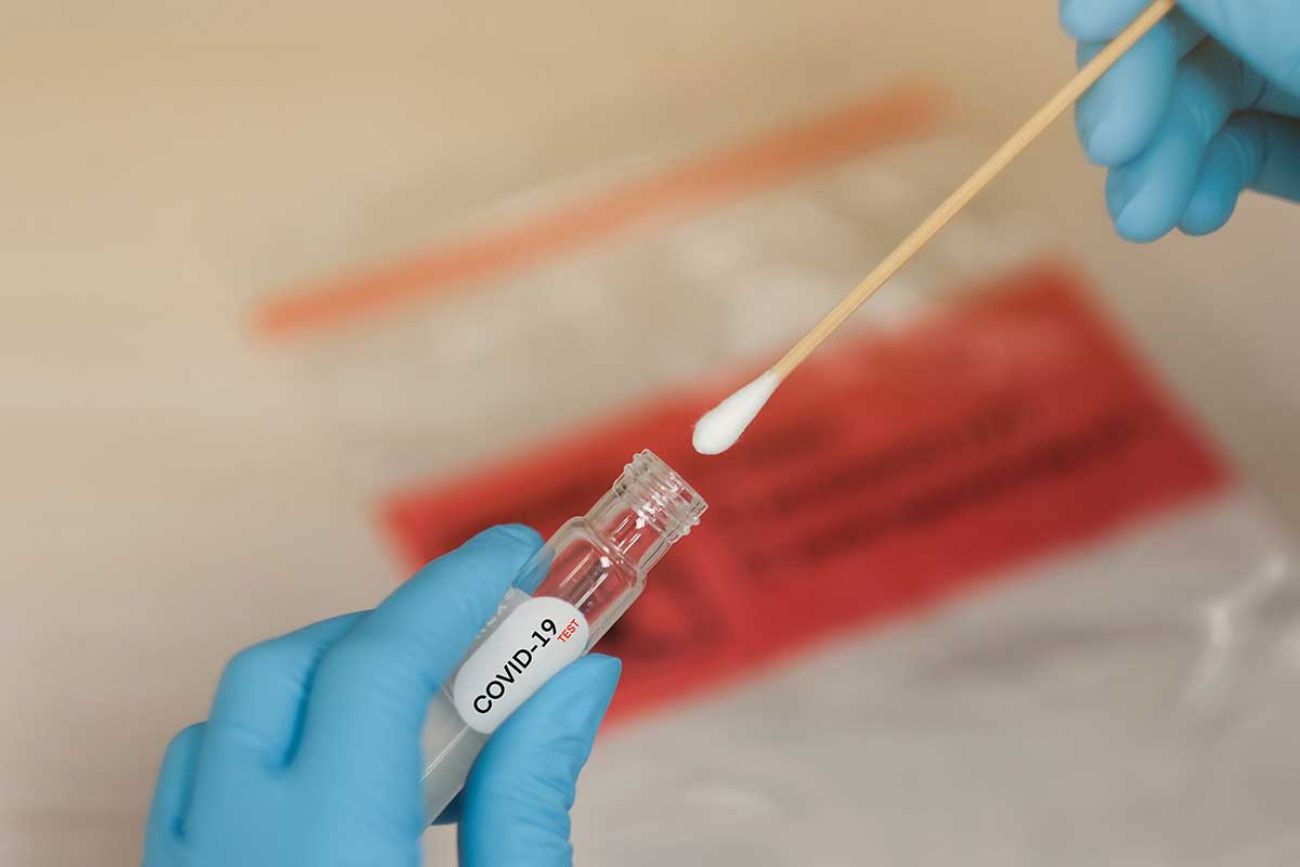Whitmer may be right. Michigan may have turned the corner on COVID surge.

- May 4: Michigan to begin easing COVID mask restrictions on Thursday
- April 29: Michigan Gov. Gretchen Whitmer links easing COVID rules to vaccines
For weeks, Michigan Gov. Gretchen Whitmer has resisted adding new restrictions to the state’s worst-in-the-nation COVID-19 wave, insisting the surge is “starting to slow down a bit.”
It’s a stance that, for the first time since the early days of the pandemic, has brought Democrats and Republicans together: Both say she’s wrong.
The Michigan GOP has called her policies “incoherent,” while Democratic allies, health officials and appointees from the Centers for Disease Control to Dr. Anthony Fauci have urged Whitmer to “shut things down.”
Related:
- As Michigan tamps down COVID, three new virus variants appear
- In Ypsilanti, one bus driver’s COVID case closes school for 2,000 students
- As Michigan COVID vaccine rates ebb, pop up clinics and casino cash appear
- Michigan Gov. Whitmer defends her Florida trip, calls criticism ‘maddening’
- Mask up, Michigan toddlers! State expands COVID orders to 2-year-olds
- Three Michigan people who died after vaccine actually had earlier COVID
- Michigan at 'record high' for COVID-19 hospitalizations of children
But Whitmer has insisted there are encouraging signs, even as Michigan on Monday recorded a record with 4,422 hospitalizations from COVID-19.
She could be right.
And if cases decrease without new restrictions and Michigan resumes its middle-of-the-pack status, it could challenge assumptions about how much the government can move numbers amid a pandemic.
Or it could underscore that, one year into the most researched health crisis in generations, we still don’t know nearly as much as we think.
Sign No. 1: Predictive models
First, an acknowledgment: Michigan has the worst coronavirus crisis in the country. And it’s not close. If this were a race, Michigan lapped the field.
After several days of declining numbers, the state reported nearly 9,000 new cases on Friday, the second-most ever, before falling again Saturday and Monday.
Michigan has been in this position for a couple weeks, standing alone. But cases are creeping up in other states, including Great Lakes states Minnesota, Illinois, Indiana, Ohio and Wisconsin.
In the past week, the rise of cases in Michigan has begun to slow and counts are falling a bit, as Whitmer suggested.
Compared to the fall surge, Michigan’s average number of daily cases is following almost an identical arc, with both bending downward at almost the same point in the surge.
There are other encouraging indicators.
Researchers at Yale, Harvard and Stanford have built a predictive model, based on current cases, deaths and testing results, that shows many of the hardest-hit counties — and the state on the whole — are seeing rates fall.
For instance, St. Clair County has the highest current rate of new infections of over 102 new confirmed cases per 100,000, compared to 66 for the state.
Though still one of the highest rates in the country, the county in the Thumb is down from a high of 141 cases per 100,000 last week.
This is where things get a little complicated, but the decline was predicted by the “covidestm” model from the universities’ collaborative.
The rate tries to predict how many people someone with COVID-19 might infect. Anything over 1 is bad — meaning rampant spread — but anything below that rate indicates spread is contained.
The rate in St. Clair County is now well below that threshold, at 0.64, while Michigan’s rate of 0.92 is encouraging and indicates things may be slowing down, according to the data.
Experts who are advising Whitmer on the pandemic use the measure as a resource, and it indicates that the spread is slowing in counties near St. Clair.
“Our best guess is that things appear to be going down right now,” said Ted Cohen, an infectious disease epidemiologist with the Yale University School of Public Health who works on the covidestm project. “Whether it stays down is dependent on people’s behavior.”
Whitmer has made that point repeatedly, encouraging residents to get vaccinated, remain vigilant and wear masks.
Sign No. 2: Decline in positive tests
Michigan has recorded its highest percentages of coronavirus tests coming back positive in this current wave, not counting the initial wave in 2020 when testing was limited.
At one point 10 days ago, nearly 17 percent of all tests — there were nearly 250,000 — came back positive.
In the fall surge, the rate never got above 15 percent. Now, the weekly percentage has fallen for 10 straight days and stands at 13.9 percent.
A week ago, 36 percent of tests in Huron County in the Thumb came back positive; that’s fallen to 25 percent this week — still incredibly high but a marked sign of improvement.
In fact, as of Monday, 67 of the state’s 83 counties had week-over-week declines in the positive test rate; two weeks ago only six counties were seeing rates fall.
Sign No. 3: Hospitalizations stabilize
Even if cases begin a sustained decline, it could take weeks for hospitalization numbers to mirror fall as well. That’s because there’s often a lag of a few weeks in infection and serious illness.
Even with Monday’s record, the increase in hospitalizations has begun to slow in the past week. Three weeks ago, hospitalizations increased 631. Two weeks ago, they jumped 861, and they soared 1,023 a week ago.
In the past week, ending Monday, hospitalizations increased by 255 people.
So even though there’s a record, which is not encouraging, the rate is appearing to slow.
And now, a mystery
It should be noted that not everyone agrees we’ve hit the peak.
West Michigan’s Ottawa County, for instance, had its most daily cases since Dec. 3, 364, on Thursday. The county’s senior epidemiologist, Derel Glashower, said cases could continue to rise from students and families returning from spring break vacations.
“It's prudent to be cautious and not be surprised if cases in Ottawa County and in the state continue to go up,” he said.
That disclaimer notwithstanding, what if cases are declining, without any direct actions from Whitmer or public health officials?
Does that mean, as Republicans suggest, that November restrictions on restaurants, schools and other activities weren’t the cause of steep declines that some at least one study had claimed?
Or perhaps the virus declines most when people change their behavior voluntarily after the virus gets close to home, through the hospitalizations of neighbors or relatives, as other experts have claimed?
Alternately, why did Michigan become such an outlier, spiking in cases even as states with few restrictions experienced declines?
Public health officials have posited many theories.
Whitmer has blamed variants and pandemic “fatigue” that made folks let their guards down, while others say the state’s earlier success in preventing the virus left more people vulnerable to it when it came back again.
“That (question) is one that we're certainly wrangling with right now,” said Marisa Eisenberg, a University of Michigan researcher whose expertise is mathematical biology.
Bottom line, no one really knows.
“If you could put all the pieces together, it would be great. We are all struggling to figure out exactly why,” said Dr. Arnold Monto, a University of Michigan epidemiologist and a global expert in coronaviruses.
At Yale, Cohen said he doesn’t see anything unique about Michigan.
People nationwide are tired of the virus and restrictions, dropping precautions and failing to practice social distancing. Variants are in every state, and many have no immunity, despite 128 million nationwide vaccinations and 31.5 million COVID infections, Cohen said.
It could just be that Michigan is a harbinger of what’s to come.
“It’s quite possible that what’s happening in Michigan is going to start happening in northern Ohio. I think it’s tremendously worrisome,” Cohen said.
“I’m very concerned about this.”
See what new members are saying about why they donated to Bridge Michigan:
- “In order for this information to be accurate and unbiased it must be underwritten by its readers, not by special interests.” - Larry S.
- “Not many other media sources report on the topics Bridge does.” - Susan B.
- “Your journalism is outstanding and rare these days.” - Mark S.
If you want to ensure the future of nonpartisan, nonprofit Michigan journalism, please become a member today. You, too, will be asked why you donated and maybe we'll feature your quote next time!








